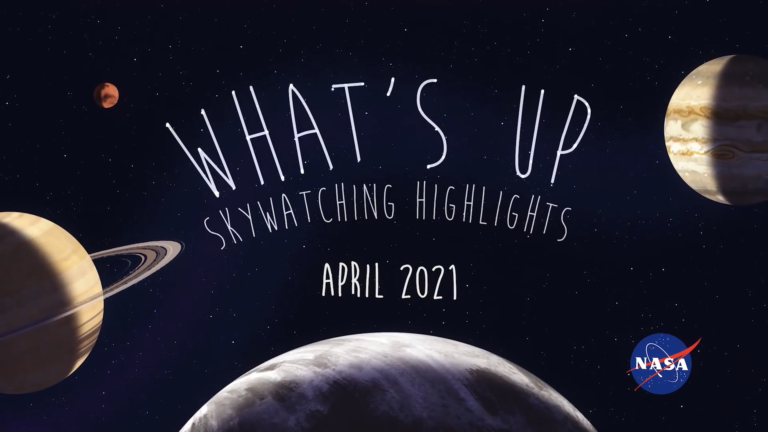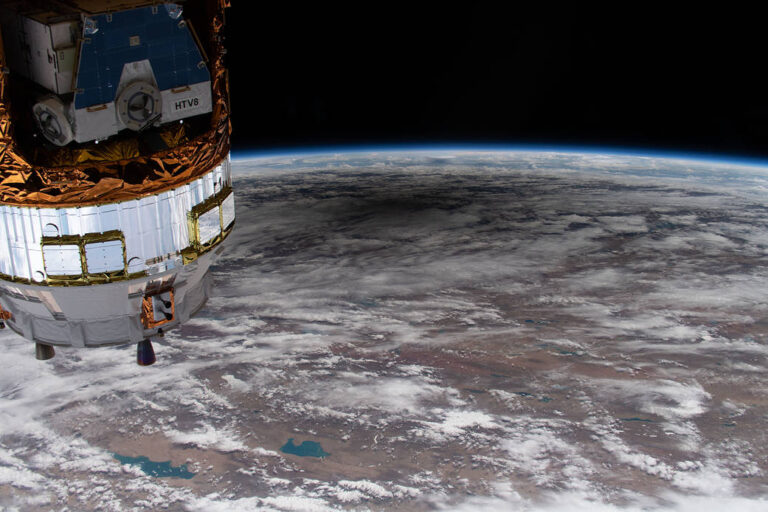观星指南(2021.04)
4月份的天空会发生什么? 早晨的行星,日落的拱门,还有在狮子座中找到狮子。 来源:NASA/JPL-Caltech 翻译:灼眼的粉丝 4月6日的早晨天空发现木星和土星与新月形成了一个可爱的三重奏。在日出前一小时的东南方低空寻找它们。 来源:NASA/JPL-Caltech 4月22日是地球日,也是一年一度的机会让我们共同欣赏我们地球家园的神奇和美丽。因此,当天空晴朗时,可以在一年中的任何时候都可以看到与地球相关的景象。 这是一种黄昏现象,你可能在日落之后才注意到。如果您可以将视线从西方的日落中移开,然后转身面向东方,你会经常看到一条粉色或橙色的天空带,下面有一条深蓝色天空带。这些天空带在日落后的几分钟内向上移动,形成一个横跨天空的拱形,随着夜幕的降临慢慢消失。 暗带是地球上升的阴影。在它上面,玫瑰色的天空带被称为金星带。我们在日落后的短时间内观察这个地方,那时太阳刚刚低于地平线,但它的一些光线在黄昏前仍在穿过大气层。较红或波长较长的太阳光能够在大气中传播最远的距离。在日落的对面,红色的太阳光从大气中散射回到你的眼睛。 金星带不是以行星命名,而是以神话中的女神命名。这些景象与地球的影子一起,形成了“反暮光拱门”。这座拱门像夜幕一样升起,随着地球的影子最终布满天空慢慢消失,让我们可以凝视星空。 在晨曦微露中也可以看到这种景象,只要在与初升的太阳相对的方向,也就是朝西看。当天色开始变亮时,地球的影子与上方的金星带变得明显,这些天空带在破晓时慢慢沉入地平线。 来源:NASA/JPL-Caltech 四月是寻找狮子的好时机。对,就是狮子座。Leo在拉丁语里是狮子的意思,这一著名的星群是以一头被神话英雄赫拉克勒斯征服的超能力狮子命名。这是个很容易定位的星座,因为它有点像一只躺在天空中的狮子,而且它有一个很容易辨认的弯曲形状,叫做 “镰刀”,代表狮子的头。 4月,在日落后的头几个小时,你可以在南方的高空找到狮子座。除了镰刀形的狮子头,还要看狮子的心脏,那颗蓝白色的灿烂之星–轩辕十四是天空中最明亮的恒星之一。 天文学家认为大多数恒星都有一个行星家族在围绕它们运行。狮子座的这两颗明亮的恒星叫做轩辕十二,实际上是一颗双星,还有轩辕十,每颗恒星都有一颗比木星大的行星围绕它们运行。 所以在4月天黑之后,踏出家门,寻找拥有镰刀形狮鬃和炽热蓝心的狮子座。 来源:NASA/JPL-Caltech 以下是四月的月相。 来源:NASA/JPL-Caltech 你可以在nasa.gov上了解美国宇航局探索太阳系及其他地区的所有任务。 我是NASA喷气推进实验室的普雷斯顿-戴奇斯,以上就是4月份的天象。 参考来源: https://solarsystem.nasa.gov/whats-up-skywatching-tips-from-nasa/




